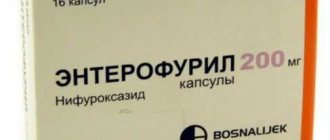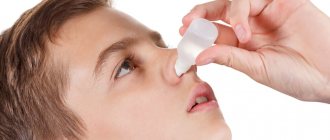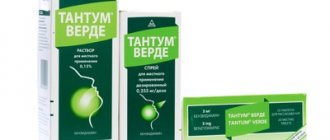Most dentists choose Miramistin for stomatitis in children and adults, as the most proven, safe and high-quality remedy. But before starting treatment, you need to find out exactly what kind of disease it is.
Stomatitis is a fairly common disease. It is characterized by the presence of swelling in the mouth, the formation of small ulcers, and the formation of a white coating. Often the gums become inflamed and the temperature rises. Moreover, no one is immune from stomatitis - both infants and adults. Despite the relatively harmless nature of the disease, fighting it is sometimes not so easy. The features of Miramistin, recommendations for its use, age restrictions, etc. will be described below.
Miramistin on the pacifier
Miramistin
is a common drug that is widely used in various fields of medicine:
- Surgery;
- Dermatology;
- Obstetrics;
- Venereology;
- Gynecology;
- Urology;
- Dentistry;
- Treatment of extensive burns, etc.
At its core, Miramistin is an antiseptic that effectively affects a wide range of pathogens of various diseases: bacteria, fungi, viruses. The active ingredient - benzyldimethyl myristoylaminopropylammonium chloride - also has the ability to reduce swelling of inflamed tissues, reduce the volume of purulent discharge, stimulate restoration and cell division in affected tissues.
Indications for use
- External treatment of various purulent skin diseases (candidiasis, mycosis, pyoderma, etc.);
- treatment (as part of complex therapy) of chronic and/or acute diseases of the genitourinary tract (urethral lesions, sexually transmitted diseases, inflammatory diseases of the vagina or cervix), as well as their individual prevention;
- treatment of acute and chronic forms of respiratory diseases (laryngitis, tonsillitis, pneumonia, bronchitis, acute respiratory infections, etc.), ENT organs (sinusitis, otitis);
- inflammatory diseases of the oral organs (gum inflammation, stomatitis, periodontal disease, peridotitis, etc.);
- treatment of burns, various purulent wounds, preventive or complex treatment of injuries in the postpartum period, injuries of the vagina, perineum after childbirth.
Use of Miramistin during pregnancy
Currently, there are no extensive scientific studies on the use of Miramistin in pregnant women.
It should be noted that when the drug is applied topically (skin and mucous membranes), the active substance is not absorbed into the systemic circulation, i.e. it can be used in the treatment of purulent diseases of the skin and mucous membranes, such as pyoderma, fungal infections, damage to the ENT organs and respiratory tract (tonsillitis, sinusitis, laryngitis, etc.).
In these cases, the throat is gargled with Miramistin solution up to 6 times a day for 5-7 days; for skin diseases, the medicine is applied to the affected area (including under a bandage) for a period determined by the doctor.
However, its use for various gynecological or urological diseases (vulvovaginitis, endometriosis, urethritis) requires a certain amount of caution. The fact is that in such cases Miramistin is administered by douching - and this is unacceptable during pregnancy.
Instructions for use
In the official instructions for use, mothers will not find information on how to give antiseptic to babies, since the minimum age recommended by the manufacturer is 3 years. But, according to the opinion of many doctors and reviews of parents, the effective use of Miramistin has been practiced from the first days of life.
When using Miramistin in the treatment of children, it is necessary to follow the dosage and doctor’s recommendations in order to avoid drying out the mucous membrane. The spray must be used carefully, as it can cause spasm of the respiratory tract.
Reviews about Miramistin
On the forums, women who took the anti-infective drug Miramistin note that they did not observe any side effects and in the future this did not affect the child’s health in any way, that is, the baby turned out to be absolutely healthy. Some mothers even talk about cases of unintentionally swallowing the drug while gargling and that no harm was noticed from this.
Doctors prescribe Miramistin to pregnant women quite boldly, because it has an immune-boosting effect and copes well with the runny nose, colds, acute respiratory viral infections and other problems.
Miramistin on the pacifier
Despite the fact that the new effective antiseptic Miramistin does not have an official recommendation for use in children under three years of age, pediatricians often prescribe it from the first year of a baby’s life.
Why? And how is this officially explained?
After the invention of antibiotics in the last century, it seemed that the main task of combating various types of infection was practically solved. Until it became clear that bacteria and other microflora dangerous to health gradually adapt to these types of drugs and stop responding to them.
TYPES OF STOMATITIS BY AGE
Dentistry has long noticed that the type of stomatitis often depends on the age of the patient. It is no wonder that children, whose immune systems are not yet so well developed, often become victims of this disease. In addition, the mucous membrane of babies is structured differently than that of an adult.
- Thrush . Candidal stomatitis in children usually appears in infancy (up to 12 months). The causative agent is a fungus of the genus Candida. The appearance of such a disease is provoked by a neutral reaction of saliva (or slightly acidic).
- The viral form of the disease most often affects children aged 1-3 years. At this time, saliva cannot effectively protect babies; its protective properties are weak. The amount of lysozyme in the body, which is designed to fight pathogenic microorganisms, decreases.
- Children under 7 years of age are distinguished by the fact that immunity decreases at the local level, which is an excellent opportunity for bacterial infection to enter the child’s body.
- Allergic stomatitis is most likely to occur in a child between 8 and 15 years of age.
An antiseptic called Miramistin has long been known in medicine. It is interesting because it is effective for any form of stomatitis. In addition, its use is not limited by age, including the first days of the baby’s existence. There are also no contraindications to the use of Miramistin for mothers during lactation.
Miramistin for children under one year old - is it possible?
They began to use it in medical practice only at the beginning of the 21st century. By medical standards, this is still a fairly new medicine that copes well even with dangerous hospital infections.
But, despite this, official recommendations for the use of Miramistin indicate an age only starting from three years. The reason is that, according to the law, these documents can only talk about experimentally verified information. But clinical studies on children of this age are not allowed.
On the other hand, no grounds have been found to prohibit the use of the drug in early childhood. Therefore, the official age limit is considered to be conditional. Pediatricians recommend using a new antiseptic for throat diseases at any age.
For children under one year of age - instructions for use
Miramistin is used to combat various childhood diseases. Including acute respiratory viral infections, diseases of the throat and nose. And for stomatitis, even for infants.
As its creators sought, under the influence of this antiseptic, only the shells of the virus are immediately destroyed, with almost no effect on human cell membranes. Therefore, it does not penetrate the mucous tissues of an adult or child.
Which is the main argument for using it at any age in otolaryngology and dentistry, even for infants with throat and nose infections.
How to take Miramistin for children under one year old
Children's doctors today prescribe Miramistin for sinusitis, parangitis, rhinitis, tonsillitis, sinuses, otitis and pharyngitis.
You can use it to rinse your child's nose. Most often this is done in a hospital. But it is not so difficult to carry out this procedure on your own and at home.
Tilt the baby's head, pour the solution into the left nostril with a pipette and wait until it appears in the right. It can also be the other way around.
It is especially convenient to use the drug in the form of a spray up to three to four times a day. If a slight burning sensation occurs, it most often goes away after 20 seconds.
It is also useful to use Miramistin before a walk to prevent colds and protect against infections.
It has been proven that it has almost no irritating effect and does not cause allergic reactions at any age. Its negative effect on the liver, as well as carcinogenic or mutagenic activity, was not detected.
Treatment of baby's throat
The main difficulty is that it is impossible to explain to the baby what is happening. And he will probably resist procedures that are unpleasant for him. The sprayer is also not suitable. A spasm of the airways may occur.
The main goal for the mother is to deliver the medicine to the mouth closer to the sore throat. Even if slightly diluted with saliva. You can only spray it on the pacifier or any object that he is most willing to put in his mouth.
If it is a spray tube, you can spray it on your baby’s tongue or cheek. This drug usually does not cause irritation and treatment should proceed smoothly.
Methods of using Miramistin in infants
Miramistin is a well-known antiseptic with a wide spectrum of action.
There are relatively few drugs that have such a wide list of indications for use, and therefore Miramistin has won the recognition of many doctors.
This medicine can be used to treat children according to the instructions from the age of three. But in practice, pediatricians often prescribe Miramistin almost from the first days of life.
The ability to use Miramistin for the treatment of infants is based on several factors:
- relative safety of the drug;
- lack of smell and taste;
- effectiveness in the fight against bacterial infections.
The effectiveness of the drug is confirmed by numerous positive reviews and is explained by the pharmacological properties of Miramistin.
- The effect of Miramistin on the destruction of bacterial cell walls.
- The spectrum of action of the drug covers gram-positive and gram-negative bacteria (strepto- and staphylococci), as well as antibiotic-resistant strains.
- Stimulates local immunity.
This unique medicine has significant advantages compared to other antiseptics:
- relatively low price and cost-effectiveness, since the drug replaces several medications at once;
- the ability to use Miramistin in newborns for the prevention of infectious diseases;
- One of the advantages of this drug is its local use and targeted effect on the affected area of the body. Doctors recommend combining Miramistin with other medications that can enhance its therapeutic effectiveness.
There are often cases when pharmacists, selecting analogues of the drug Miramistin, suggest using Chlorhexidine.
But there are significant differences between these drugs.
Doctors note the much greater toxicity of Chlorhexidine and a number of adverse symptoms that can develop with its use.
The drugs have completely different compositions, despite the fact that their indications for use are identical. Experts are of the opinion that Miramistin is safer. This is what is prescribed to the youngest patients. Chlorhexidine is contraindicated in infants, despite its pronounced antimicrobial effect.
Main applications:
- The antiseptic can be used as a spray or ointment. In the case of infants, it is better to use a spray.
- For throat diseases, you can irrigate it; one press is enough to spray 1.5-2 ml of the drug.
- For babies, it is better to apply the product to the pacifier and give it to the child - it is safer. The procedure must be repeated 2-3 times a day.
- Irrigation is best done using a special medical inhaler - a nebulizer. It transforms Miramistin with the help of ultrasound into “microdrops” (almost steam), when inhaled, the baby will not be able to develop a spasm of the respiratory tract. For inhalation, you need to use 3-4 ml of Miramistin, you need to breathe 2-3 times a day for 1.5-2 minutes.
The above methods of using Miramistin in children are most suitable for infants who will not yet be able to gargle, and irrigating the oral cavity using a nozzle is a very controversial issue.
In case of accidental ingestion of Miramistin, the child will have a protective reaction in the form of vomiting.
With its help, the baby’s body will be completely cleansed of the drug.
To prevent such cases, you should not leave the child alone, and after use it is necessary to monitor the condition of the baby.
Actions in case of vomiting after taking the medicine:
- It is necessary to turn the baby on his stomach or side so that he does not choke on vomit.
- It is necessary to monitor the baby’s emotional state and try to calm him down.
- It is necessary to constantly remove vomit from the newborn's mouth.
- After the vomiting has stopped, you need to rinse the child's mouth and give a small amount of warm water.
When irrigating the mucous membranes, the entire drug settles on the walls. Once in the esophagus and stomach, Miramistin does not penetrate the cell membranes and is not absorbed into the blood.
Contraindications
Miramistin has practically no contraindications, these are: individual intolerance to the drug and allergies to the components.
Description of the drug and its therapeutic effect
Miramistin is an antiseptic drug for external use. The drug is intended for the treatment of diseases caused by pathogenic viruses, fungi, bacteria, including stamps that are resistant to antibiotics.
The active substance of the drug affects the cell membranes of microorganisms, which leads to their destruction. In addition, the drug stimulates the activity of immune cells, accelerating the regeneration (restoration) of tissues, so when treating wounds, they heal quickly.
Miramistin is a domestic drug used in various areas of medicine: surgery, gynecology, dentistry, ENT practice and others.
Miramistin is available in several forms:
- solution in a bottle with an aerosol-type sprayer or urological nozzle;
- ointment in a tube.
Unlike other antiseptics, Miramistin has a selective effect against pathogenic microorganisms without affecting human cells.
Video: Miramistin - a safe and effective antiseptic of the modern generation
Is Miramistin possible while breastfeeding?
The drug is used only externally on the skin and mucous membranes. Due to the fact that the drug does not penetrate into the blood and breast milk, its use during lactation is allowed.
DETECTION OF STOMATITIS
The first thing that distinguishes stomatitis is the formation of inflammation on the oral mucosa. The reason for this is the development of pathogenic microorganisms. Moreover, stomatitis can manifest itself in different forms, all of them are characterized by their own symptoms, which, in turn, are determined by their own reasons for the development of the disease. Diagnosis is based on the observed symptoms:
- Viral stomatitis. In this case, the patient’s body temperature always rises, and ulcers form on the mucous membrane. In addition, the lymph nodes (located near the lower jaw) increase in size. A distinctive feature of this type of stomatitis is its high degree of contagiousness.
- Traumatic stomatitis. This type of disease is characterized by painful sensations in the mouth. It is also characterized by the formation of swelling. If the disease affects a child, the baby is often whiny and refuses to eat, because it hurts to chew food. Fortunately, this form of the disease is not contagious.
- Candidal stomatitis. This form is formed by a fungus of the genus Candida. A distinctive feature of this stomatitis is a white coating, which is very clearly visible. While eating, the sensations are also painful. Often this stomatitis is accompanied by fever, and the form itself is quite contagious.
You can read more about candidal stomatitis in the mouth on our website.
- Stomatitis resulting from a bacterial infection. This is due to streptococcal infection or staphylococcus. When bacterial stomatitis just begins, the gums turn red and swelling also appears. Small ulcers form in the mouth, causing pain to the patient. If the disease affects a child, he may develop a fever. In adults, the temperature rarely rises.
- Allergic stomatitis . Signs of this type include swelling, and inflammation in the gum area is also observed. The temperature may also rise, but not in every case. Allergic stomatitis is distinguished by the fact that it can quickly turn into stomatitis of another type - all it takes is any viral or bacterial pathogens entering the mouth.
In addition to the types of stomatitis described above, there is also the so-called. symptomatic type. It represents symptoms of another disease. Methylene blue is usually used to relieve painful symptoms. Blue for stomatitis is not the only remedy that will help cure the disease, but it will significantly alleviate the patient’s condition.
Miramistin during lactation: indications for use
During lactation, a woman may be recommended Miramistin for:
- treatment of the oral cavity in the treatment of dental problems;
- combating fungal infections of the skin and mucous membranes;
- rapid healing of wounds, burns, postoperative sutures, including after cesarean section, as well as cracked nipples;
- prevention and treatment of postpartum injuries and infections, inflammatory diseases of the vagina;
- treatment of chronic otitis, tonsillitis and other diseases of the ENT organs;
- elimination of candidiasis (thrush) in the vagina, corners of the mouth, oral cavity, and nipples.
Miramistin is a broad-spectrum antiseptic that is used to treat various types of infections.
Miramistin for stomatitis in children - treatment
As already mentioned, Miramistin can be used for stomatitis in young children, including infants. However, children at this age are not yet able to rinse independently, so for treatment a special nozzle is used that allows the drug to be sprayed. Irrigation is carried out by pressing the nozzle button once; the stream should be directed to the lesion.
This action must be carried out four times a day. If the baby is not yet 4 years old, it is better to try to prevent miramistin from getting into the throat itself or onto the tonsils so that the baby does not cough or choke. However, there is a way to increase efficiency - for these purposes, the so-called is created in the oral cavity. alkaline environment. This refers to soda rinses (1 teaspoon of soda per 200 grams of water).
Also, judging by numerous reviews, the gel form of miramistin has proven its effectiveness. The gel stays on the mucous membrane for quite a long time and penetrates deeply, perfectly counteracting harmful flora. The gel is applied using a gauze swab and the inflamed areas are gently wiped.
The drug in the form of an ointment for a child will not be as effective, since it can involuntarily be washed away by the child’s saliva, and, as a result, does not penetrate as deeply.
But if the child is trained to rinse his mouth on his own, the product can be diluted with boiled water (proportion 50% to 50%). In this case, the following dosage should be adhered to:
- Children under 6 years old: from 3 to 6 ml.
- Children under 12 years of age: from 6 to 10 ml.
- Teenagers over 14 years old: 15 ml.
Rinsing should be done a maximum of 6 times daily.
Analogues for nursing mothers
In addition to Miramistin, there are other antiseptic drugs with a similar active ingredient on sale.
Table: analogues of the drug Miramistin
| Name | Release form | Main active ingredient | Indications | Contraindications |
| Dezmistin | Solution for external use. | Miramistin. |
| Individual sensitivity to components. |
| Miramidez | Ear drops. | Otitis is acute and chronic, external and medial, bacterial and fungal. |
| |
| Okomistin | Eye/ear/nasal drops. |
| Individual sensitivity to components. | |
| Septomirin | Solution for external use. |
|
TREATMENT OF ADULTS
Adults mean all those who are over 14 years old. In this case, the patient independently determines for himself a convenient form of release, after which he treats the affected areas of the oral mucosa: rinsing, applying gel, irrigation, etc.
If we are talking about rinsing, the dose is 15 ml (solution at a concentration of 0.01%, i.e. undiluted). By the way, you can purchase an already diluted solution; it is sold in pharmacies - you don’t need to dilute or stir anything.








